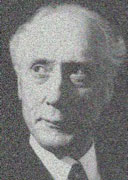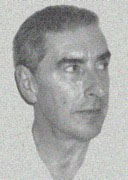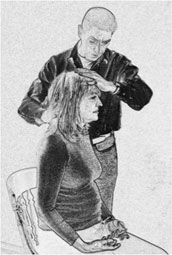
Welcome to the ezine produced by SGI Buddhists that prompts the positive, kindles the constructive, highlights the hopeful and leaves you feeling - well, up!


A medical trial of the Alexander Technique, published in the British Medical Journal, has concluded that the exercise method is highly effective in reducing back pain.
For years, F Matthias
Alexander struggled to get his technique recognised by the medical
establishment, despite remarkable results with his own patients. Yet
this year, a study established the effectiveness of the individualised
lessons, designed to develop lifelong skills for self care, and release
muscle tension and spinal decompression. The trial found the Alexander
Technique to be more powerful in treating long term back pain, than
massage or GP prescribed exercise.

Vida Adamoli spoke to John Laher, one of the foremost Alexander teachers practising today, about his great uncle, F. Matthias Alexander, and the history of the technique.
The Alexander Technique is named after F. Matthias Alexander (1869-1955), the Australian actor and teacher who devised the discipline. It is a form of physical re-education based on the holistic principle of mind-body unity. Very young children naturally use their bodies correctly. It isn’t long, however, before bad habits creep in. And with time most of us end up with more bad habits than good. During one-to-one sessions pupils are taught to change ingrained physical tendencies by becoming aware of how they breathe and move. It’s a gentle process of readjustment and realignment - the opposite of the quick fix – that successfully treats a wide variety of conditions. These include back problems, sciatica, migraine, arthritis, strokes, digestive problems and high blood pressure.
John Richard Laher is one of the foremost Alexander teachers practicing today. This is not surprising as the Technique is in his blood. F. Matthias Alexander, to  whom he bears a striking resemblance, is his great uncle and his grandmother, May Alexander, was Alexander’s favourite sister. Stories of the brilliant Alexander were woven into John’s childhood. He listened entranced to accounts of his great uncle’s early years in
whom he bears a striking resemblance, is his great uncle and his grandmother, May Alexander, was Alexander’s favourite sister. Stories of the brilliant Alexander were woven into John’s childhood. He listened entranced to accounts of his great uncle’s early years in
Alexander’s acting career was interrupted by a voice problem that seriously impacted on his plans for the future. To discover the cause he started observing himself carefully in multiple mirrors. He noticed that he was pulling his head back slightly which interfered with his vocal production. While working to overcome this, he became aware of other habits that were contributing to the problem. This led to the discovery of what he described as ‘The Primary Control’, the understanding that our Head-Neck-Back relationship is a primary influence on the co-ordination of our body mechanism and movements as a whole. At which point The Alexander Technique was born.
After moving to
John Laher, who lives and works in the heart of
These pioneer teachers remembered their lessons as being ‘imbued with lightness and laughter’. If trainees became too intense, Alexander would suggest they took a break and return when they felt more ‘relaxed and open’. John feels this is very important. Teachers and pupils can become far too rigid, he warns, which is counterproductive.
 John’s teaching style is open, flexible and non-judgemental. One of his first pupils was a member of the British reggae band, UB40. John helped him address neck, shoulder and jaw problems, resulting in a freeing up of the voice. Today John’s pupils come from all professions and walks of life, although actors, singers, musicians and dancers continue to be well represented. People bring specific problems – such as back, neck, or migraine – and then discover that bad breathing habits, for instance, have created other issues that need to be addressed.
John’s teaching style is open, flexible and non-judgemental. One of his first pupils was a member of the British reggae band, UB40. John helped him address neck, shoulder and jaw problems, resulting in a freeing up of the voice. Today John’s pupils come from all professions and walks of life, although actors, singers, musicians and dancers continue to be well represented. People bring specific problems – such as back, neck, or migraine – and then discover that bad breathing habits, for instance, have created other issues that need to be addressed.
Today The Alexander Technique has become a highly respected discipline. It is incorporated in all the major performing arts schools and music colleges, both in the

